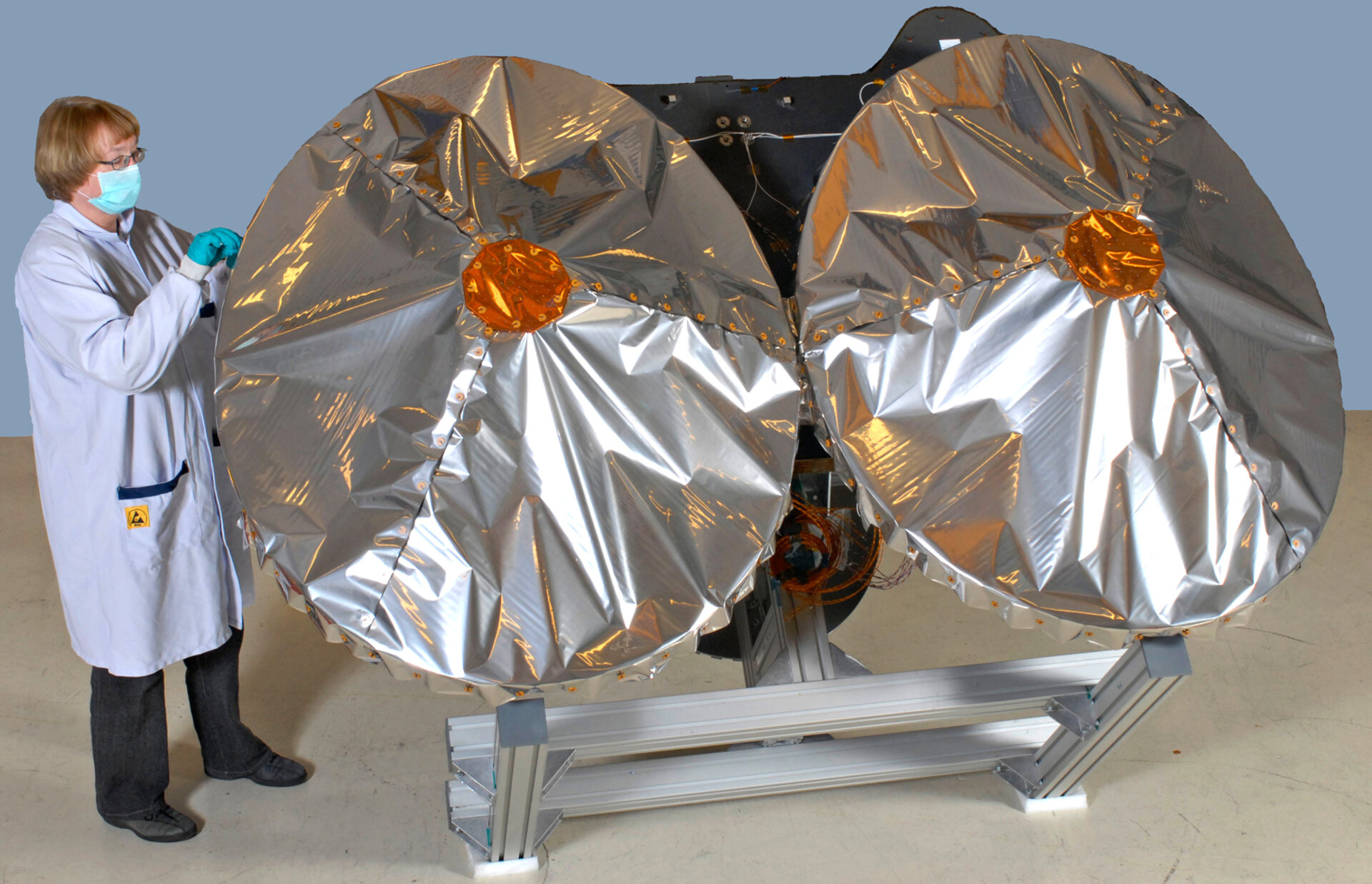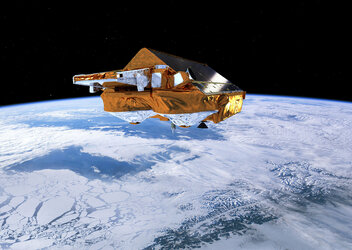CryoSat-2 technology: sensitive plastic antennas stay under wraps
CryoSat-2's Earth-facing side is dominated by its double radar antennas. Unlike any radar altimeters before them, these antennas come wrapped: the dishes stay shrouded in multi-layer insulation while the central reflectors are draped by a microwave-transparent sunshield.
This unusual appearance is a consequence of CryoSat-2’s orbit: the antennas are subjected to extreme temperature shifts, but their shape and the ‘baseline’ distance between them must not alter by more than 2.5 micrometres at most – one thirtieth the thickness of a human hair.
The antennas themselves, built by RUAG Space AB in Sweden, are constructed from carbon fibre reinforced plastic (CFRP), a composite material that is essentially immune to temperature-driven warping, plus an ultra-thin aluminium coating. For further rigidity, CFRP was also used to make the base plate that supports the antennas. Both antennas also had to be made as identical as possible, requiring cutting-edge evaluation on the RUAG test range.
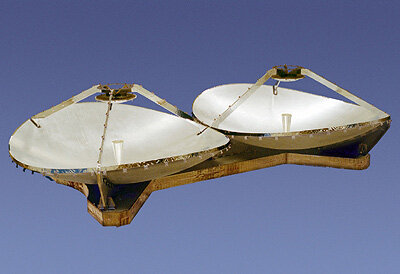
“Even then, we can’t know for sure if the satellite will perform in space in the same way it did during ground-tests until after we launch it,” explained Dr Francis. “Determining the subtle differences between the on-ground and in-orbit cases are key activities in the commissioning phase. Our onboard calibration includes a signal injected once per second from the transmitter directly back into the radar, helping to identify any temperature variation effects on instrument performance.
“To specifically check for any physical antenna motion, we will use some external calibration methods, including a radar transponder deployed in Svalbard and tested using Envisat’s altimeter, as well as comparing surfaces with known slopes.”
Intangible improvements
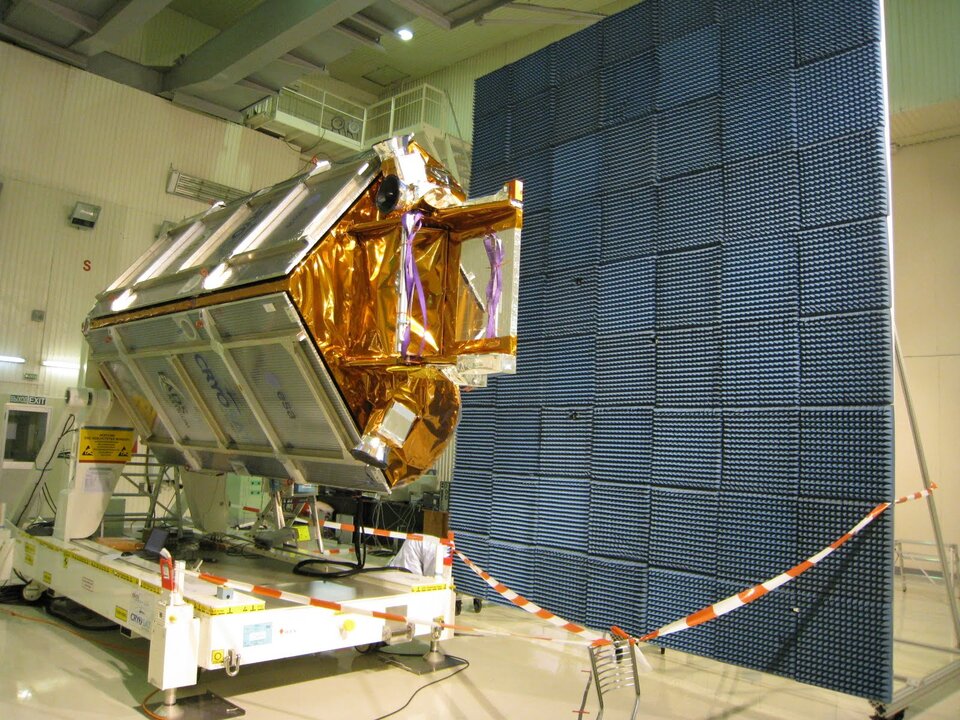
One problem identified and solved during ground testing illustrates the extraordinary performance demanded of the mission. In some conditions, electromagnetic interference from SIRAL’s own electronics could shift the interferometric phase of the very lowest power signals received, potentially affecting instrument accuracy in the SARIn mode at the extremes of its design capability. This clashed, however, with the aim from day one of the project to achieve the best state-of-the-art results possible from its unique instrument.
TAS-F engineers quantified the problem closely during testing, allowing ESA’s project team to develop additional software to take account of it. “If we had launched without recognising the issue it would have been difficult to solve purely from in-orbit data,” said Dr Cullen. “With low-power echoes returning from the very extreme slopes that CryoSat is built to sample, we would have seen small errors in the processed data. Only time will tell when we process with and without the correction and see the effect.”
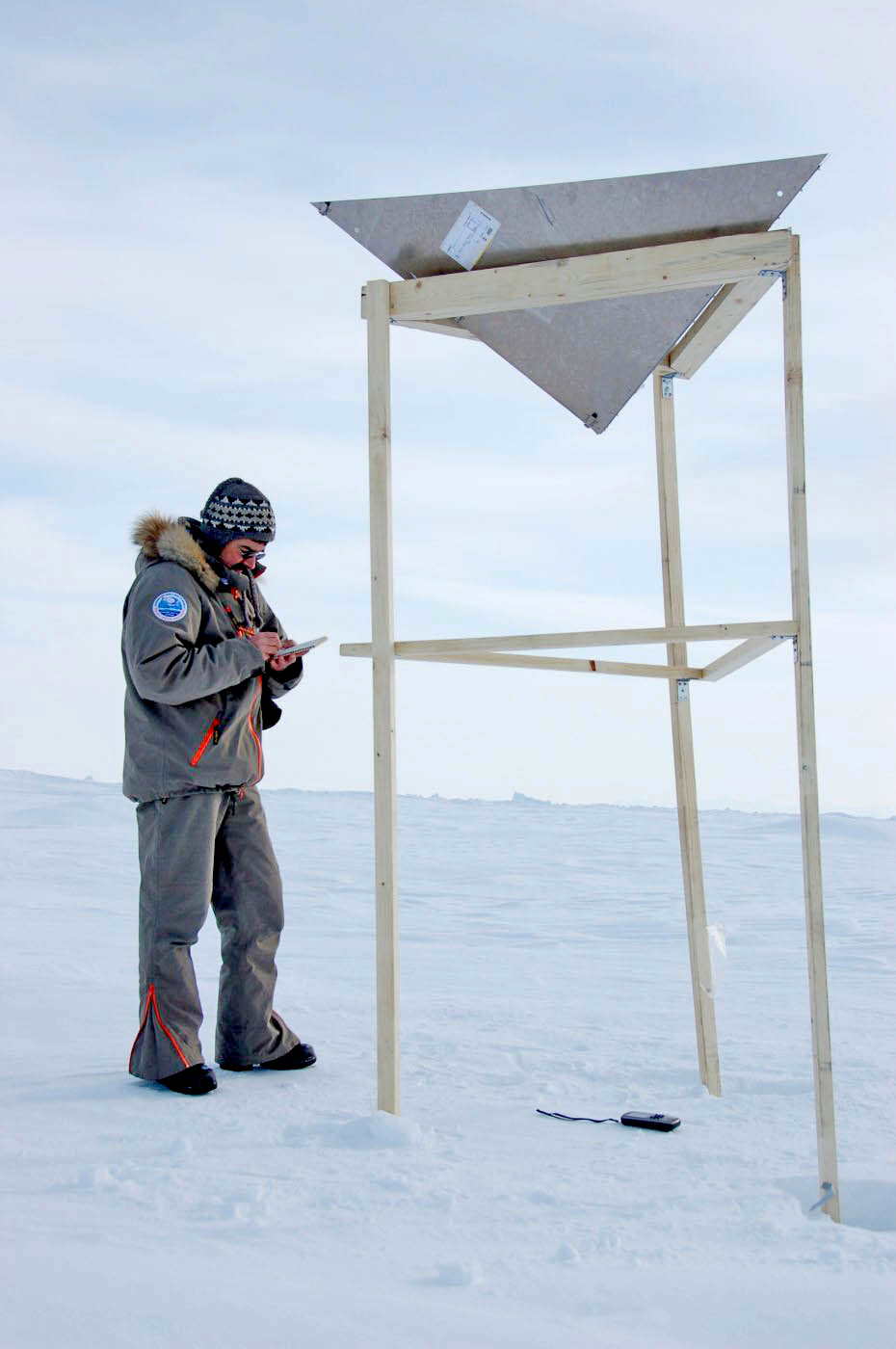
This correction is an intangible but important improvement of CryoSat-2 over the first CryoSat. The new mission has also benefited from additional validation campaigns carried out under the CryoVEx (CryoSat Validation Experiment) umbrella. A similar instrument to SIRAL known as ASIRAS (Airborne Synthetic Aperture and Interferometric Radar System) was developed through ESA’s Basic Technology Research Programme (TRP) so that sample data could be acquired over polar ice in conjunction with local observations for ‘ground-truthing’.
“Because the first satellite failed we had time to make several additional validation flights in the Arctic for further fine-tuning,” said Dr Cullen. “The upshot is we have a very high confidence that our science processing method is a good one – it works, it is verified and tuned by analysis of the large repository of processed ASIRAS data distributed to our international validation teams.”
Beyond CryoSat-2
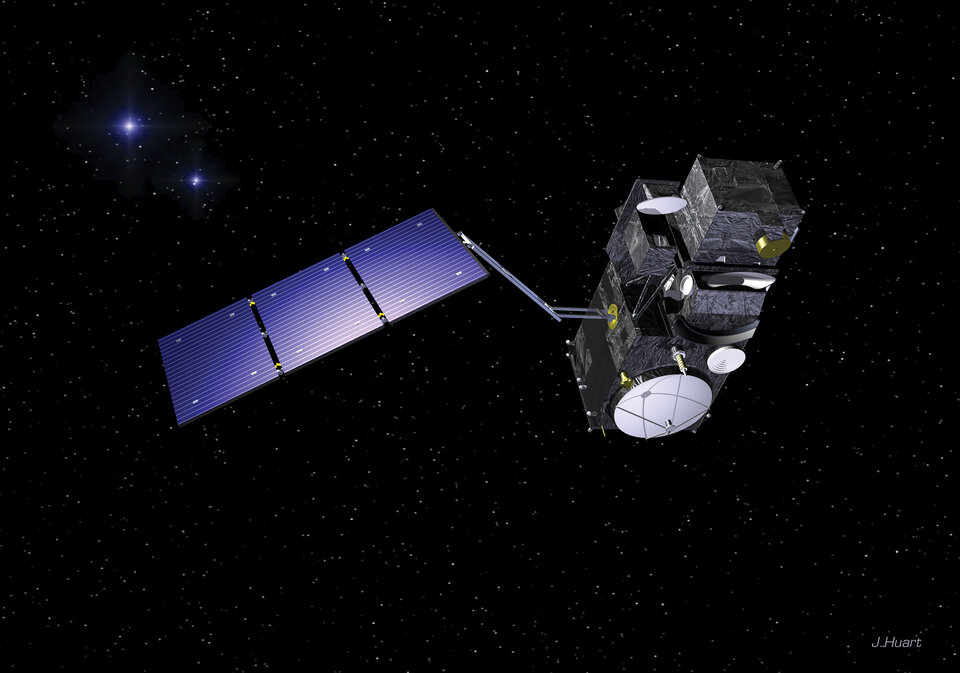
As CryoSat-2 begins its three-year working lifetime, it is also preparing the way for ESA’s next altimetry instrument, set to fly aboard Sentinel-3 in 2012. This new SAR Altimeter (SRAL) will adopt CryoSat’s SAR mode to identify sea ice in the same way and is being extended for ocean, coastal ocean and inland water. CryoSat’s SAR science and calibration processing functionality is therefore being adapted for Sentinel-3, with both ASIRAS and future in-orbit CryoSat data being used for verifying SRAL’s design and processing system.
The CryoSat platform itself may enjoy a significant afterlife in another guise: with some adaptation it is being considered for hosting a ‘continuity’ mission in the Poseidon–Jason series of ocean altimeters, guaranteeing their 17-year history of continuous data collection will go on far into the future with improved accuracy.


